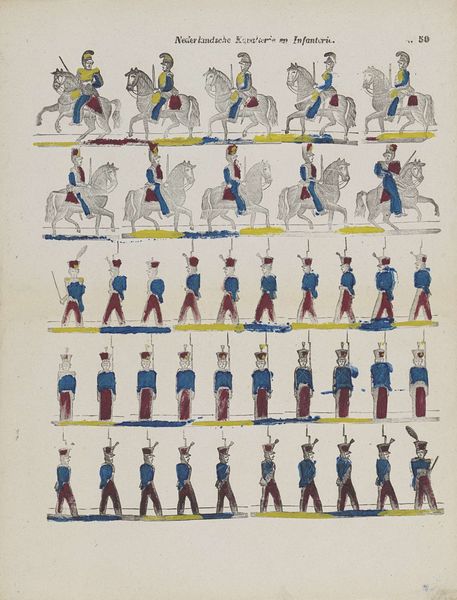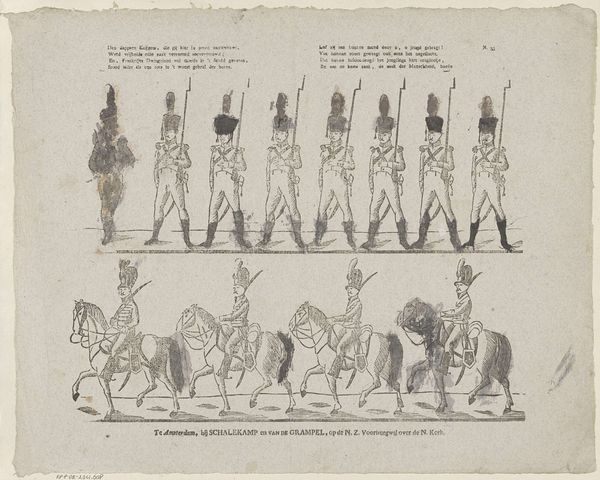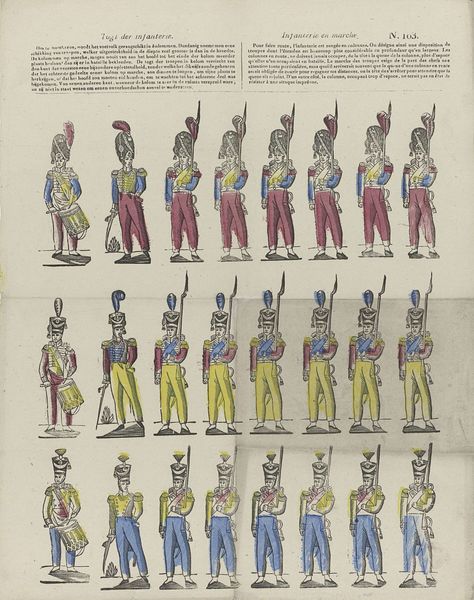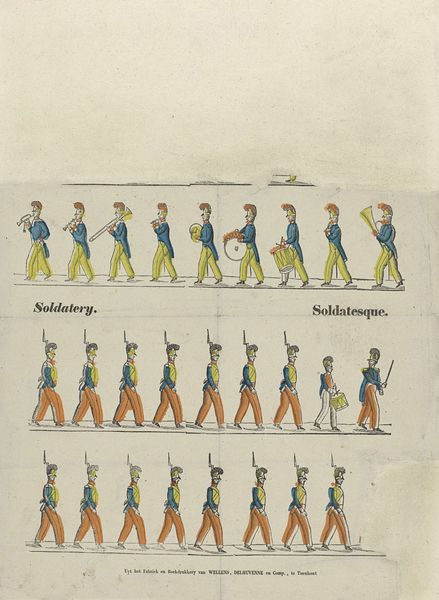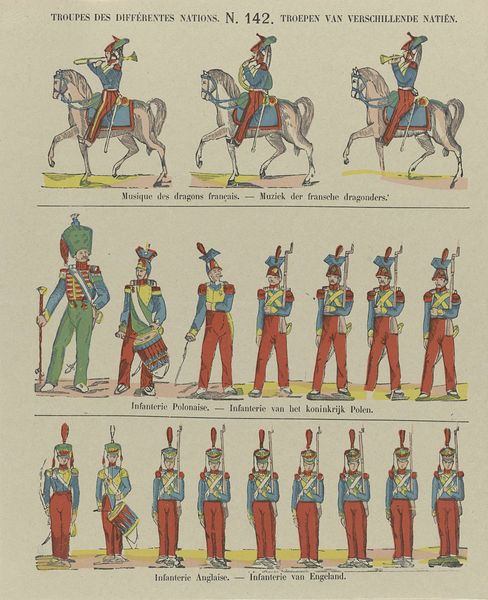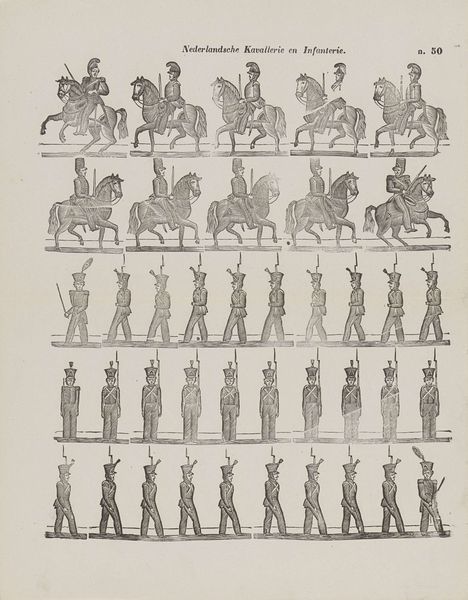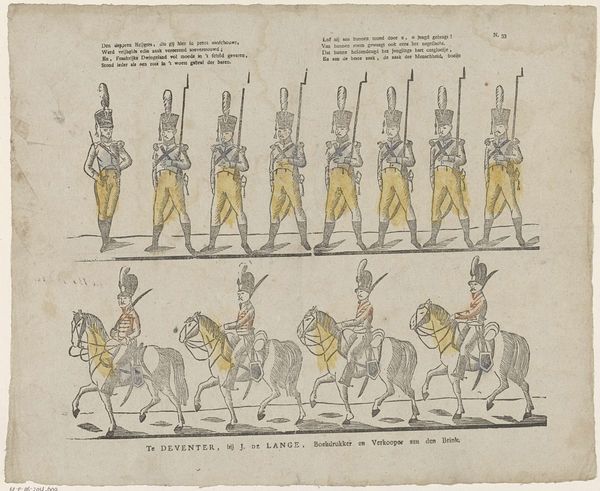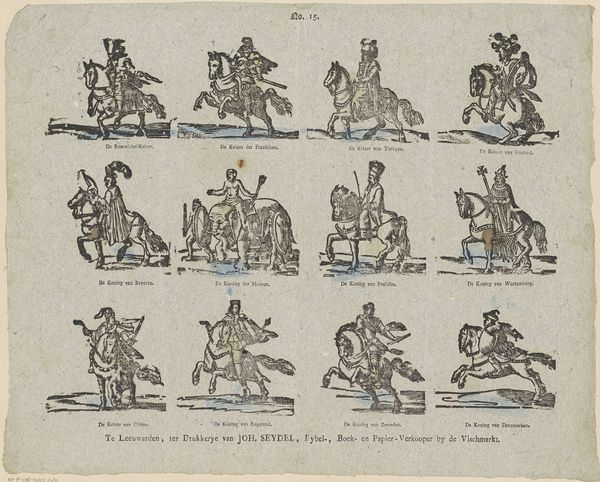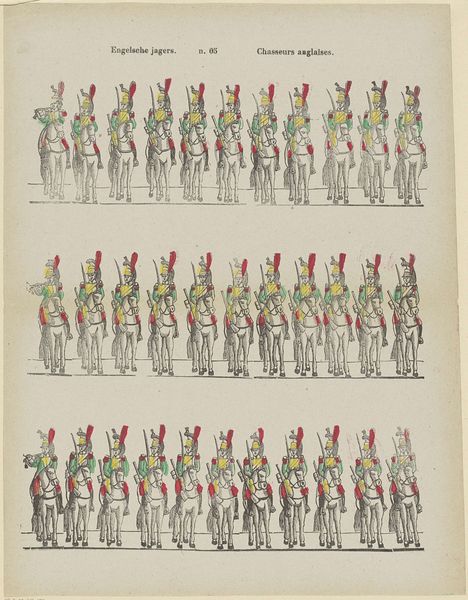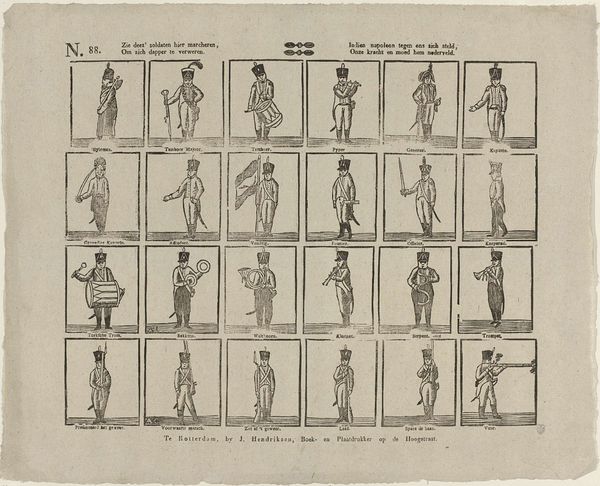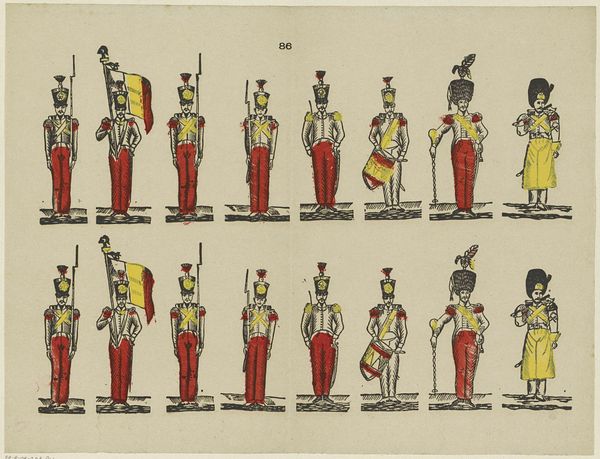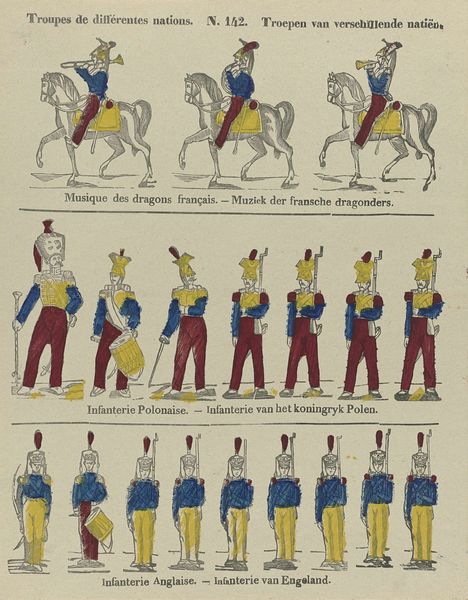
Dimensions: height 308 mm, width 395 mm
Copyright: Rijks Museum: Open Domain
Curator: This lithograph is entitled "Tamboersen hoornblazers der koninklijke garde," or "Drummers and Horn Players of the Royal Guard" and is believed to have been created by Monogrammist B sometime between 1848 and 1881. Editor: Immediately, I'm struck by its regimented feel. The two rows of musicians, one above the other, seem to echo a visual hierarchy reflective of social structures at the time. It looks like a page from a book of templates, like each one could be cut out individually. Curator: Interesting. Structurally, I see a careful arrangement of line and form. Note how the artist uses a relatively limited color palette. The muted reds and greens are set against the stark whites of their trousers and skin tones. There is, perhaps, a conscious reduction of color to emphasize the clarity of the line. Editor: Precisely, and it speaks volumes, doesn't it? These are not glorifications of war but almost mass-produced figurines that dehumanize these men. There’s an implied violence even in this parade, reflecting the power structures and potentially the exploitation inherent within militaristic systems. Were these images meant for propaganda? Or something else entirely? Curator: One could argue that the lithographic technique itself contributes to that sense of distance, right? The process allows for reproducibility. As such it emphasizes the flattening effect in this depiction, transforming the individual into a repeatable motif. This kind of print could allow wide distribution in a way unique to the 19th Century. Editor: Yes, but also who are the Royal Guard protecting? In 1848, many countries in Europe, including where this piece was made, experienced significant social upheaval. So, looking at the date, perhaps they're trying to make them look innocent by literally papering over more turbulent affairs. It looks so cheerful on the surface, but what’s brewing underneath? Curator: This analysis makes me want to spend more time looking into what kind of form such unrest took in relation to this artistic style, I might have to check the historical archives on it. Editor: Indeed! It’s precisely through such conversations, intertwining form and socio-historical context that we gain richer insights into this visually regimented image.
Comments
No comments
Be the first to comment and join the conversation on the ultimate creative platform.
